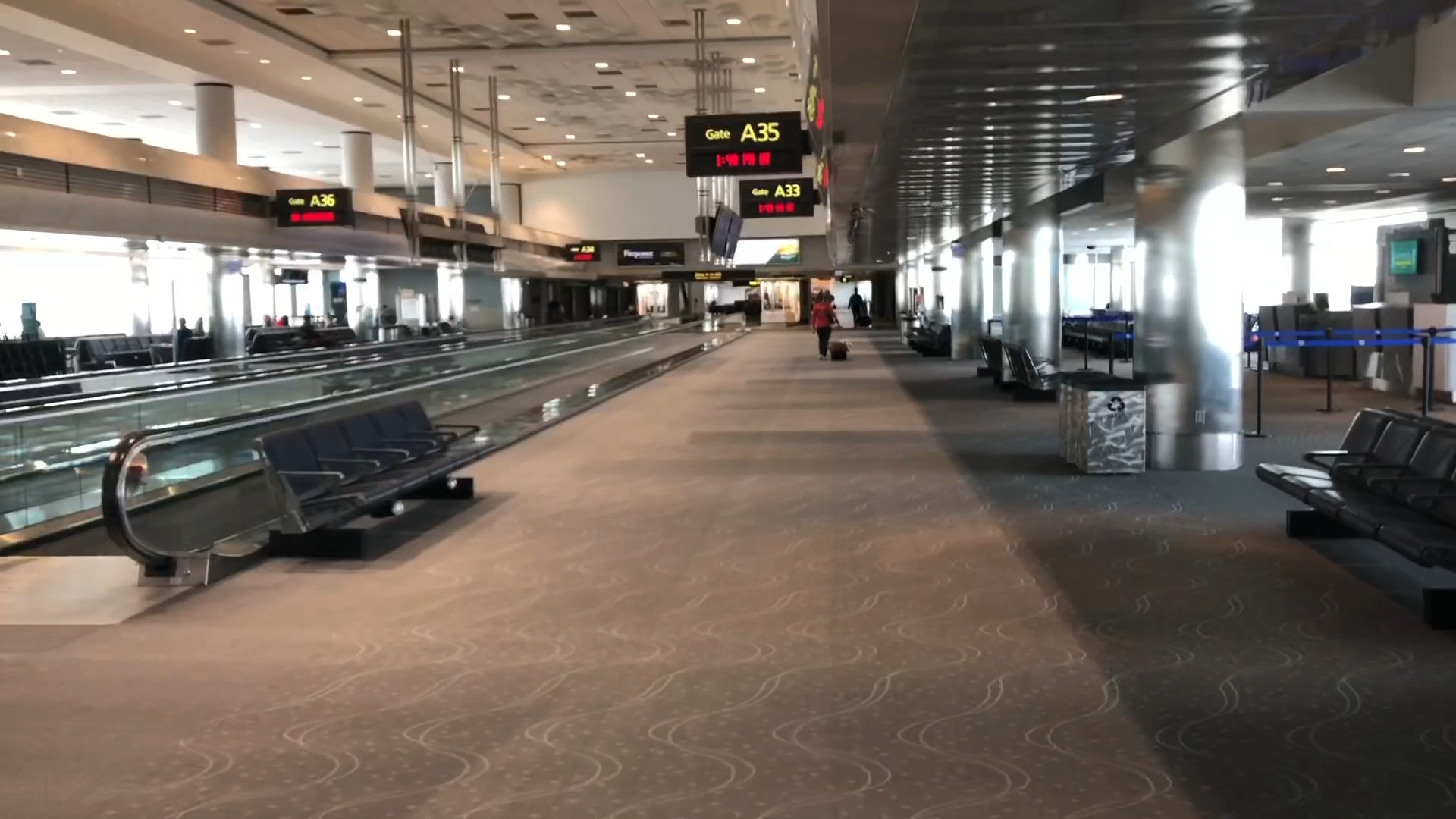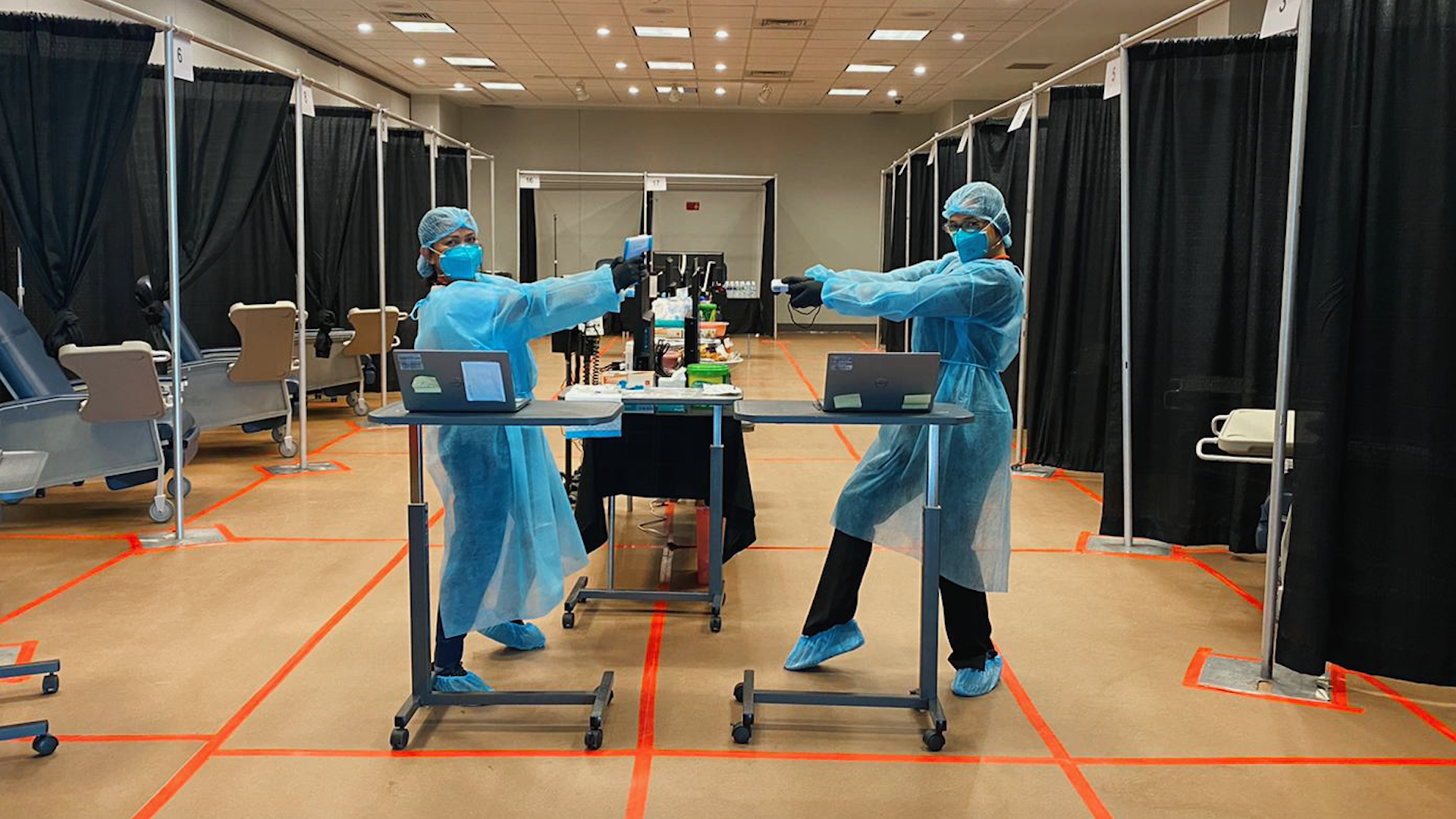Frontline doctor reflects on two years of COVID-19

LAKEWOOD, Colo. — When Dr. Comilla Sasson worked as an emergency room doctor the night of the Aurora theater shooting in 2012, healthcare professionals from around Colorado came to her aid. Nearly 10 years later when the coronavirus pandemic began, she felt a duty to help other doctors the way they had helped her all those years ago.
After finding an online posting calling for doctors from around the nation to aid the pandemic response in New York City, Sasson was on a flight as soon as possible.
“I turned to my husband and I said 'hey, so I know we have a three year old and a five year old, and there's like this massive global pandemic happening and I wanna go to the epicenter, is that okay?’” she recalled. “And by the way, I'm leaving in 24 hours.”
Sasson has been an emergency room doctor for 18 years, and currently works around the Denver area, including at Kaiser, University of Colorado and Veteran Affairs. As a seasoned medical practitioner, very little could surprise her — but the beginning of the pandemic managed to be shocking.

“I landed in New York city at the airport and there was literally not a soul around … it felt very apocalyptic,” Sasson recalled.
Sasson spent the next month working in New York City, treating overflow COVID-19 patients in a tennis center-turned field hospital.
“The thing that was really interesting about being there was being in with literally hundreds of other healthcare workers — nurses, doctors, respiratory therapists — and we're all watching this disease process unfold, and for the first time in my career I couldn’t look back at a book to get more information,” she said. “We were living through history.”
Once her time in New York had concluded, Sasson continued to travel around the country. As the pandemic raged on, she offered assistance to hospitals in Texas, Montana, California and North and South Dakota, traveling to whoever needed her most.
Some of the most difficult days were those spent consoling dying patients and attempting to video call their families. When Sasson’s mother passed away pre-pandemic, she was able to sit by her mother’s side and hold her hand as she passed on. Sasson realized how important that moment was to her, but individuals who died at the height of the pandemic didn’t have that luxury.
“[I was] in the ICU having to call families every day and say, ‘here's your update on your family member.’ Or, ‘they're gonna die soon, do you wanna FaceTime with them?’” she said. “You know, if you think about how awful that is, as a person to have that happen to you, if you were a person who was sick then as a family member … it’s a whole different type of loss.”
The amount of death she witnessed in that year ultimately led to the end of her time as a traveling COVID-19 doctor, but even more difficult than the loss she experienced was being separated from her family while she helped others.
“I think ultimately the hardest part for me was, you know, watching my husband at home with my two kids … it's hard to leave your family for that long,” she said. “You do it because you know you have to and you really want to help other people.”
“There's so much fear and anxiety and there's the fear of going to the epicenter of all of this and putting my life on the line, but there was more fear for me being at home and bringing it home to my family,” Sasson said. “In some ways, it was easier for me to leave them for a year because I knew I didn’t want to get them sick.”

Although she is no longer traveling to the hardest-hit areas of the pandemic, Sasson’s work with COVID-19 is far from over. She’s been taking to social media to spread information and stamp out harmful false information about the virus.
“I want to share information on social media because I feel like if I don't do it, somebody else will, and there has been so much misinformation and that misinformation has absolutely hurt people. And so I cannot stand by and watch that anymore,” she said.
“If I can just get a couple people to get the vaccine, if I can get a couple people to wear their mask for a little bit longer, if I can get a couple people to understand that getting medications that aren't approved for treating COVID patients is bad for you, like then I feel like I've done my job,” Sasson said.
One of the consequences of so much misinformation, she said, has been a large attitude shift in how the American people see and treat healthcare workers.
“I remember being in New York city and listening to all the healthcare workers being applauded and people banging on pots and pans and everybody was rallying for us. And then fast forwarding a year later and literally having some of my own patients that I was caring for have told me ‘you're not a real doctor, you don't know what you're talking about and you don't care about me,’” she remembered. “I'm not doing this because I have an agenda. My only agenda is that I cannot see as much loss as I saw that first year. I can't.”
For some, it feels as if the pandemic is winding down, but for Sasson, the future still holds much uncertainty. All we can do is continue to stay as safe as possible as the next waves come — and there will certainly be more waves and variants, she said.
“I think this is where you transition from living in fear and anxiety to living with the idea that there are more waves, but there are things that I have control over that can help get me through this next wave,” she said. “I think that's the number one thing I try to keep getting across on social media is that it's not over … but at the end of the day, at least your healthcare professionals have some idea of what they're doing. So hopefully that makes you feel better — it makes me feel better.”
Corbett Stevenson is a journalism intern at Rocky Mountain PBS. You can reach her at corbettstevenson@rmpbs.org.
Alexis Kikoen is a senior producer at Rocky Mountain PBS. You can reach her at alexiskikoen@rmpbs.org.
Amanda Horvath is a multimedia producer with Rocky Mountain PBS. You can reach her at amandahorvath@rmpbs.org
